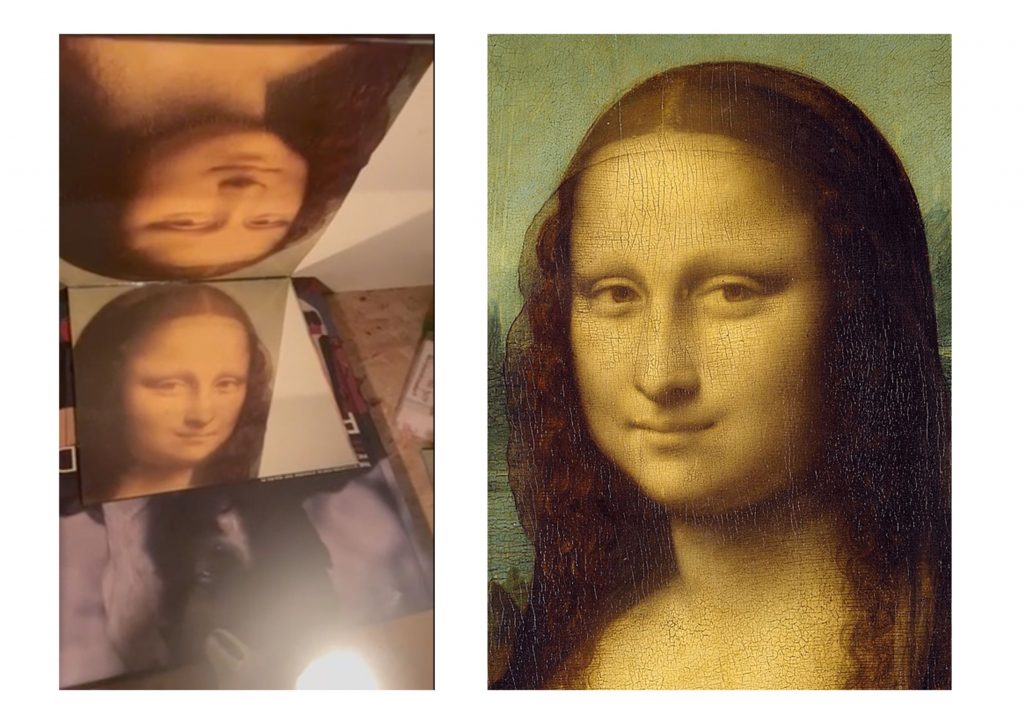Have I cracked Da Vinci code over true Mona Lisa story?
Artist believes he can establish that Renaissance artist’s muse for world's most famous painting was in fact a man all along
Tuesday, 30th April — By Dan Carrier

Street artist Ben Mellor
IT is the most famous portrait in the world and Leonardo Da Vinci’s Mona Lisa is instantly recognisable around the globe.
But is the woman with the ever-changing smile, said to be a silk merchants wife, really who art historians have claimed she is?
A street artist now believes he may have unravelled the 500-year-old mystery and firmly believes in the theory that the Italian’s painting was of Gian Giacomo Caprotti, a man working as his assistant and who Da Vinci was in love with.
Ben Mellor, a street artist whose work has graced many public spaces across Camden, believes he has stumbled across a long-held secret after he decided to make a new stencil of the Da Vinci work for a piece of art.
“I have always been fascinated by Da Vinci,” he told the New Journal. “He was not just a painter – he was much more than that. I was never taught art at school and I used Da Vinci to teach myself. I have always had his notebooks and I know his story.”
Mr Mellor added: “I wondered why he carried the Mona Lisa around for 15 years. To my eyes, it is an awful portrait. It is terribly coloured and of a really ugly woman.
“People say it was unfinished and he kept retouching it, but that’s not how portraiture works. It is standard practice to ask the sitter to return if you are retouching.
“Da Vinci left this woman in Florence in 1503 and kept working on the painting in France up to 1514.”

Mr Mellor’s ‘camera obscura’ testing and the Mona Lisa by Leonardo Da Vinci
Mr Mellor found it odd that Da Vinci spent four years painting the portrait and then obsessively tinkered with it until he died.
It now hangs in the Louvre gallery in Paris and is looked at by a queue of thousands of visitors every day.
Mr Mellor said: “The man’s a genius and the picture is tiny – and how could he keep retouching it without the sitter being there?”
Mr Mellor said he decided to investigate the origins of the Mona Lisa further.
“My practice has been making political stencils to lampoon the never-ending cast of grotesques that form our political class,” he said. “I put these pre-existing caricatures through a negative light process. I put the image into a camera obscura, lit it by candle light, as Da Vinci would have done, and a completely new face was revealed.
“The unmistakable visage of a male appeared – jaw line, cheeks, shape of the head – a completely different figure, whom I believe to be Caprotti.”
He then explored the use of shadow and it revealed other tell-tale signs.
“If you look at the shadows around the eyes, they fall in a way that is incorrect,” he said. “They are plain wrong on the left eye. I went through Da Vinci’s notebooks and I found a drawing of a woman in the same pose and it has the correct shading. It means there is something fishy about the Mona Lisa.”
Gian Giacomo Caprotti was known to Da Vinci as “the little devil” but much has been suggested about the nature of their intense relationship. Mr Mellor said he hoped art historians will take his investigation seriously, but understands the chances of persuading the Louvre to listen to him will be slim.
He said: “It felt sacrilegious. I got goosebumps. I felt I had solved a 500-year-old mystery – and it is a bloke, no doubt about it.”
Mr Mellor is convinced he knows the man’s identity and supports the idea that it is really of Caprotti.
“I am 100 per cent sure this is his assistant,” he said. “Where does the story of the silk merchant’s wife come from? A source that has never been proven or challenged. “All we know is a silk merchant commissioned a painting. There is no evidence that it is the Mona Lisa.”
Another vital clue can be found in Da Vinci’s will, added Mr Mellor.
He said: “When he died he left everything to his current assistant at the time – except one thing. He left the Mona Lisa to his assistant who he had not worked with for 16 years. Why is that?”
The Mona Lisa has been on display at the Louvre since 1797, but its notoriety increased when it was stolen by a former gallery worker in 1911. The thief, Vincenzo Peruggia, said he believed it should be returned to Italy but the painting was recovered as he tried to sell it three years later.

